Themed collection 2022 Emerging Investigators

Contributors to the Emerging Investigators collection 2022
This profile article showcases the researchers who have contributed an article to the 2022 Emerging Investigators collection.

Chem. Commun., 2023,59, 2518-2531
https://doi.org/10.1039/D3CC90037A
Small-molecule photoswitches for fluorescence bioimaging: engineering and applications
This minireview highlights advances in the application of small-molecule photoswitches towards the design of controllable functional reporters for fluorescence microscopy.

Chem. Commun., 2023,59, 660-669
https://doi.org/10.1039/D2CC05870G
Organic and quantum dot hybrid photodetectors: towards full-band and fast detection
In this Highlight, we outlined the recent progress of organic/quantum dot hybrid photodetectors, with the aim of further broadening the response range and enhancing the detection performance.
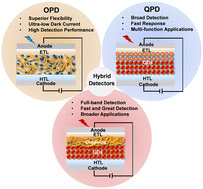
Chem. Commun., 2023,59, 260-269
https://doi.org/10.1039/D2CC05281D
Manufacturing polymeric porous capsules
The review paper outlines the current state-of-the-art strategies adopted to fabricate polymeric porous capsules which represent a novel supramolecular construct that broadens the applicability and versatility of self-assembled polymeric systems.
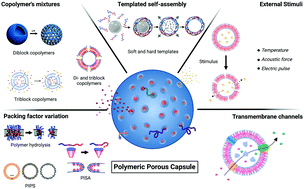
Chem. Commun., 2022,58, 4409-4419
https://doi.org/10.1039/D1CC06565C
Recent advances in 8π electrocyclization reactions
This feature article focuses on the description of 8π and 8π/6π electrocyclization reactions and their mechanisms, while various diverse syntheses based on these reactions are also discussed in detail.

Chem. Commun., 2023,59, 670-687
https://doi.org/10.1039/D2CC04805A
Bio-based monomers for amide-containing sustainable polymers
This feature article outlines biobased monomer types and their design philosophy targeting three main polymerization routes towards achieving sustainable polymers with amide groups.

Chem. Commun., 2023,59, 382-400
https://doi.org/10.1039/D2CC05161C
Molecular engineering of confined space in metal–organic cages
The host–guest chemistry of metal–organic cages can be modified through tailoring of structural aspects such as size, shape and functionality. In this review, strategies, opportunities and challenges of such molecular engineering are discussed.

Chem. Commun., 2022,58, 13873-13886
https://doi.org/10.1039/D2CC05560K
Myofibroblast specific targeting approaches to improve fibrosis treatment
Fibrosis has been shown to develop in individuals with underlying health conditions, especially chronic inflammatory diseases.

Chem. Commun., 2022,58, 13556-13571
https://doi.org/10.1039/D2CC04825F
Long-range DNA interactions: inter-molecular G-quadruplexes and their potential biological relevance
Intermolecular G-quadruplex structures can form within distal region of genomic DNA, contributing to chromatin looping. Herein, we discuss recent evidence supporting formation of iG4s in living cells and their potential biological function.

Chem. Commun., 2022,58, 12753-12762
https://doi.org/10.1039/D2CC04872H
Synthetic applications of NHPs: from the hydride pathway to a radical mechanism
We briefly summarized synthetic applications of N-heterocyclic phosphines in both hydridic and radical reductions with an emphasis on their recently discovered radical reactivity.

Chem. Commun., 2022,58, 12528-12543
https://doi.org/10.1039/D2CC04844B
Controlling the photophysical properties of ionic transition-metal complexes through various counterions
This paper lists the counterions that can be used to tune the photophysical properties of ionic transition-metal complexes, and it also summarizes the advances towards their information encryption and anti-counterfeiting applications.

Chem. Commun., 2022,58, 12286-12296
https://doi.org/10.1039/D2CC04651B
Functions and fundamentals of porous molecular crystals sustained by labile bonds
A few organic molecules have been found to form porous molecular crystals by simply stacking with each other via van der Waals forces or analogous weak interactions. This article reviews the fundamentals and functions of these crystals.

Chem. Commun., 2022,58, 11887-11897
https://doi.org/10.1039/D2CC04719E
Directing metallo-supramolecular assembly through complementarity
This Feature Article details our strategies using complementary pairs of ligands to control connectivity at metal ions and direct structure in metallo-supramolecular self-assembly.
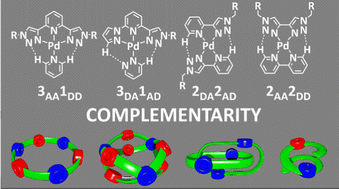
Chem. Commun., 2022,58, 11637-11648
https://doi.org/10.1039/D2CC04464A
Introduction to the biomimetic design of interfacial materials for water overflow control
This feature article summarizes the current research on the control of overflow behavior.
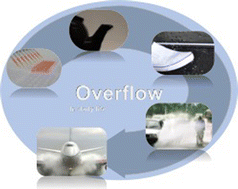
Chem. Commun., 2022,58, 9051-9059
https://doi.org/10.1039/D2CC03224D
Recent developments in DNA-based mechanical nanodevices
Recent development of DNA nanodevices for the detection and control of mechanical forces in vitro and in a cellular environment.
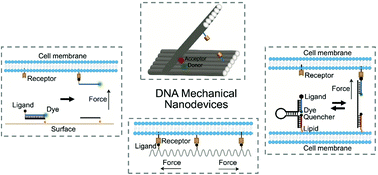
Chem. Commun., 2022,58, 4700-4710
https://doi.org/10.1039/D2CC00302C
Guest-dependent bond flexibility in UiO-66, a “stable” MOF
We report “flexibility constants”—a conceptual analog to metal–ligand stability constants—of UiO-66, the prototypical “stable” MOF, across a wide temperature range in both vacuum and in the presence of typical guest solvents.
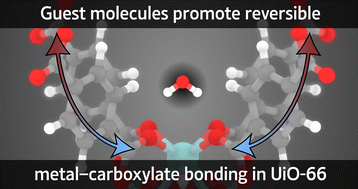
Chem. Commun., 2023,59, 1309-1312
https://doi.org/10.1039/D2CC05895B
Solvent-tunable exciton-charge transfer mixed state enhances emission of functionalized benzo[rst]pentaphene through symmetry breaking
A benzo[rst]pentaphene (BPP) substituted by two bis(methoxyphenyl)amino (MeOPA) groups (BPP–MeOPA) was synthesized and its structural and photophysical properties clearly characterized.
![Graphical abstract: Solvent-tunable exciton-charge transfer mixed state enhances emission of functionalized benzo[rst]pentaphene through symmetry breaking](/en/Image/Get?imageInfo.ImageType=GA&imageInfo.ImageIdentifier.ManuscriptID=D2CC05369A&imageInfo.ImageIdentifier.Year=2023)
Chem. Commun., 2023,59, 720-723
https://doi.org/10.1039/D2CC05369A
Redshifted and thermally bistable one-way quantitative hemithioindigo-derived photoswitches enabled by isomer-specific excited state intramolecular proton transfer
We report bistable indole-containing hemithioindigos (HTIs) with one-way quantitative photoswitching properties, as well as highly redshifted bipyrrole-containing HTIs inspired by conductive polymers.

Chem. Commun., 2023,59, 563-566
https://doi.org/10.1039/D2CC05548A
Quorum sensing communication between lipid-based artificial cells
Quorum sensing communication is key in living microorganisms. Here, we show reminiscent behaviour in artificial cell populations consisting of lipid vesicles loaded with sender–receiver machinery.
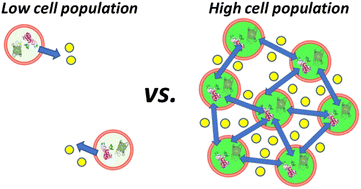
Chem. Commun., 2023,59, 579-582
https://doi.org/10.1039/D2CC05367E
Mechanistic insight into CdSe nanoplatelet-sensitized upconversion: size and stacking induced effects
A unique triplet–triplet annihilation-based upconversion mechanism was observed upon studying the effect of the lateral size of CdSe nanoplatelets, with an interplay of the power threshold and upconversion efficiency.

Chem. Commun., 2023,59, 322-325
https://doi.org/10.1039/D2CC04694F
Synthesis of a nanoscale Cu(II)31-oxo-carboxylate cluster, and effect of Cu–oxo cluster size on visible-light absorption
A Cu31-oxo cluster is discovered forming a link between small molecules and CuO nanoparticles.
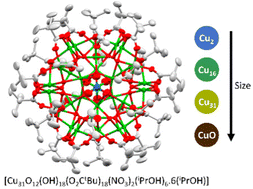
Chem. Commun., 2023,59, 59-62
https://doi.org/10.1039/D2CC05478G
Photo-switchable anion binding and catalysis with a visible light responsive halogen bonding receptor
We report a visible-light halogen bonding photoswitchable anion receptor and catalyst; displaying an over 50-fold enhancement in chloride binding.

Chem. Commun., 2023,59, 51-54
https://doi.org/10.1039/D2CC05199K
Analyte sensing with unselectively binding synthetic receptors: virtues of time-resolved supramolecular assays
Time-resolved supramolecular assays probe analyte-characteristic complexation and decomplexation rates. Consequently, even unselectively binding synthetic receptors can be used for analyte identification and quantification.

Chem. Commun., 2022,58, 13947-13950
https://doi.org/10.1039/D2CC04831K
Validation of a post-radiolabeling bioconjugation strategy for radioactive rare earth complexes with minimal structural footprint
The nine-coordinate aza-macrocycle DO3Apic-NO2 and its kinetically inert complexes [M(DO3A-pic-NO2)]− (M = La, Tb, Eu, Lu, Y) can be readily bioconjugated to surface accessible thioles on peptides and proteins with a minimal structural footprint.

Chem. Commun., 2022,58, 13728-13730
https://doi.org/10.1039/D2CC06128G
Enzyme self-label-bound ATTO700 in single-molecule and super-resolution microscopy
Near-infrared ATTO700 is evaluated as an acceptor in SNAP- and Halo-tag protein labelling for ensemble and single molecule Förster Resonance Energy Transfer (FRET) and in stimulated emission by depletion (STED) super resolution microscopy.
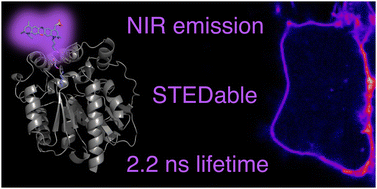
Chem. Commun., 2022,58, 13724-13727
https://doi.org/10.1039/D2CC04823J
Mesoporous silicas tethered with anions as quasi-solid electrolytes for lithium–metal batteries
Mesoporous silicas tethered with anions were developed as quasi-solid electrolytes. The high grafted density of –NTf− groups and their uniformly distributed negative charge endow MCM41-NLiTf with single Li-ion conductivity up to 2.4 × 10−4 S cm−1.
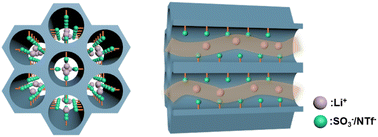
Chem. Commun., 2022,58, 13656-13659
https://doi.org/10.1039/D2CC05394B
PEDOT/PVC-modified amperometric carbon electrodes for acetylcholine detection
Selective detection of acetylcholine (ACh) with PEDOT/PVC-modified amperometric carbon electrodes.
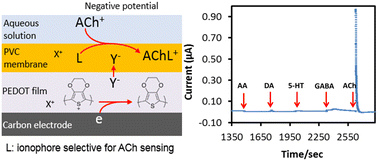
Chem. Commun., 2022,58, 13218-13221
https://doi.org/10.1039/D2CC03946J
Isostructural σ-hydrocarbyl phospholide complexes of uranium, neptunium, and plutonium
A bis-phospholide framework allows isolation, structural, and spectroscopic characterisation of isostructural lanthanide, uranium, neptunium, and plutonium σ-bonded hydrocarbyl complexes.
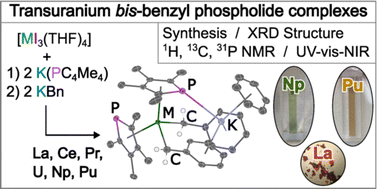
Chem. Commun., 2022,58, 13278-13281
https://doi.org/10.1039/D2CC04803E
Regioselective C(sp3)–H amidation of 8-methylquinolines with N-hydroxyphthalimides
Herein, the Rh(III)-catalysed C(sp3)–H bond amidation of 8-methylquinolines using N-hydroxyphthalimides as the amidation source is explored.
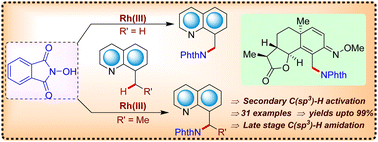
Chem. Commun., 2022,58, 13151-13154
https://doi.org/10.1039/D2CC04772A
Mass photometry reveals SARS-CoV-2 spike stabilisation to impede ACE2 binding through altered conformational dynamics
Here we show using mass photometry how proline substitutions, commonly used for SARS-CoV-2 spike stabilisation in vaccine design, directly affects ACE2 receptor interactions via dynamics of open and closed states.
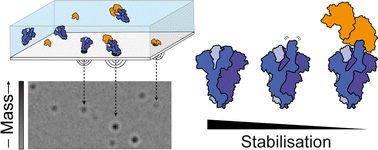
Chem. Commun., 2022,58, 12939-12942
https://doi.org/10.1039/D2CC04711J
Charge transport in liquid crystal network of terthiophene-siloxane block molecules
We report that mesogens consisting of a terthiophene core and discrete oligodimethylsiloxane side-chains terminated by acrylate units can be photopolymerized in the columnar phase with retention of nanoscale order and charge transport capabilities.
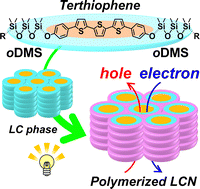
Chem. Commun., 2022,58, 12819-12822
https://doi.org/10.1039/D2CC04911B
Side-chain torsional dynamics strongly influence charge transport in organic semiconductors
The role of terahertz torsional side-chain motions on charge carrier dynamics in organic semiconductors (OSCs) is found to be highly-dependent on the equilibrium conformation of the molecule, highlighted here for thiophene-containing derivatives.

Chem. Commun., 2022,58, 12803-12806
https://doi.org/10.1039/D2CC04979A
Stimuli-responsive fluorescent nanogel: a nonconventional donor for ratiometric temperature and pH sensing
A reactive stimuli responsive fluorescent polyaminoamide nanogel (NANO-PAMAM) is synthesized via an aza-Michael polyaddition reaction in water and subsequently transformed to a ratiometric nanosensor via post-polymerization modification of the reactive NANO-PAMAM.
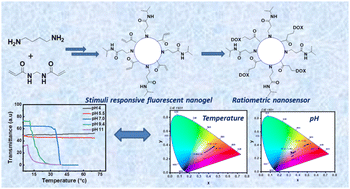
Chem. Commun., 2022,58, 12807-12810
https://doi.org/10.1039/D2CC04852C
Spontaneous oxidation of I− in water microdroplets and its atmospheric implications
Water microdroplets can oxidize I− into I˙, presenting a previously unknown source of I˙ and I2 in atmospheric water.

Chem. Commun., 2022,58, 12447-12450
https://doi.org/10.1039/D2CC04288F
Stabilizing large pores in a flexible metal–organic framework via chemical cross-linking
Chemical cross-linking stabilizes the open form of a flexible aluminum metal–organic framework with large 17 Å pores.
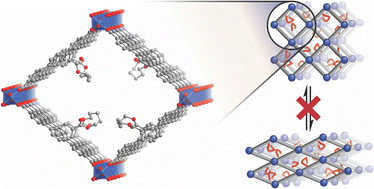
Chem. Commun., 2022,58, 12361-12364
https://doi.org/10.1039/D2CC04829A
Optical sensing of aqueous nitrate anion by a platinum(II) triimine salt based solid state material
Selective and quantitative measurement of aqueous nitrate (NO3−) anion is achieved using solid [Pt(Cl-4-tpy)Cl]ClO4 salt (Cl-4-tpy = 4-chloro-2,2′:6′2′′-terpyridine), and as the salt supported on controlled porous glass.
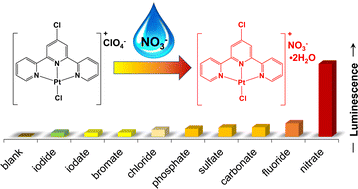
Chem. Commun., 2022,58, 12160-12163
https://doi.org/10.1039/D2CC04732B
Polymer networks of imine-crosslinked metal–organic cages: tuneable viscoelasticity and iodine adsorption
The solution-state structure of MOP-15 is elucidated, enabling its direct use as a porous monomer for covalent polymer networks.

Chem. Commun., 2022,58, 12122-12125
https://doi.org/10.1039/D2CC04969D
Direct acylation and alkynylation of hydrocarbons via synergistic decatungstate photo-HAT/nickel catalysis
Herein, we describe a protocol for the direct and selective acylation and alkynylation of the C(sp3)–H bonds of saturated hydrocarbons by synergistic decatungstate photo-HAT and nickel catalysis.
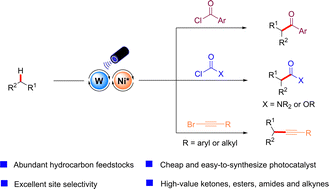
Chem. Commun., 2022,58, 11937-11940
https://doi.org/10.1039/D2CC04408K
Vinyl cation-mediated intramolecular hydroarylation of alkynes using pyridinium reagents
Cyclization of alkyne-tethered arenes in the presence of a designer Brønsted acid to give benzocycloheptenes and benzocyclohexenes.

Chem. Commun., 2022,58, 11523-11526
https://doi.org/10.1039/D2CC03794G
Quantum dot gels as efficient and unique photocatalysts for organic synthesis
Quantum dot gel is more efficient than quantum dots for photocatalytic organic synthesis due to the removal of surface ligands during gelation.

Chem. Commun., 2022,58, 11260-11263
https://doi.org/10.1039/D2CC03872B
Dynamic covalent chemistry with azines
Azines provide an attractive balance in dynamic covalent chemistry, with rapid exchange in acidic conditions and good stability in the presence of water.

Chem. Commun., 2022,58, 11103-11106
https://doi.org/10.1039/D2CC03523E
Ternary-salt solid polymer electrolyte for high-rate and long-life lithium metal batteries
A ternary-salt solid polymer electrolyte consisting of LiPF6-LiTFSI-LiFSI salts and poly(1,3-dioxolane) was developed through an in situ polymerization for a stable Li metal anode.
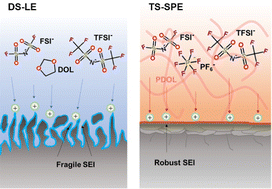
Chem. Commun., 2022,58, 10973-10976
https://doi.org/10.1039/D2CC04128F
Towards fully optimised and automated ESR spectroscopy
ESR-POISE: a Python package for on-the-fly optimisation and automation of ESR experiments.
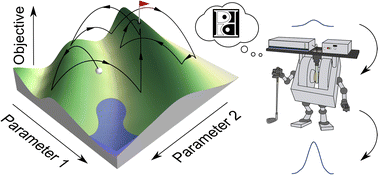
Chem. Commun., 2022,58, 10715-10718
https://doi.org/10.1039/D2CC02742A
Phosphine-mediated three-component bioconjugation of amino- and azidosaccharides in ionic liquids
Bioconjugation of carbohydrates has been a challenging task because of their chemical, functional, and structural diversities, and no single chemical modification tool can be universally applicable to all the target substrates in different environments.

Chem. Commun., 2022,58, 10568-10571
https://doi.org/10.1039/D2CC04013A
The effect of halogenated spacer cations on structural symmetry-breaking in 2D halide double perovskites
Herein, we present a strategy to introduce above-room temperature non-centrosymmetry into two-dimensional halide double perovskites (A′4M′M′′X8) using a halogenated A′-site organic linker, 3-chloro/bromo propyl amine.
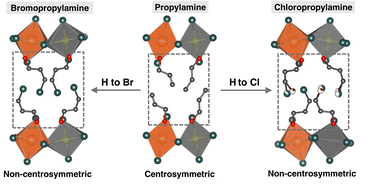
Chem. Commun., 2022,58, 10504-10507
https://doi.org/10.1039/D2CC02747J
Color-tunable emissive heptagon-embedded polycyclic aromatic dicarboximides
A series of novel push–pull dyes containing heptagon-embedded polycyclic aromatic dicarboximides show interesting photophysical properties including tunable emissions leading to NIR, high fluorescence quantum yields (ΦF), and large Stokes shifts.
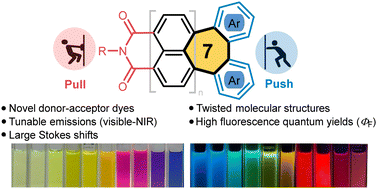
Chem. Commun., 2022,58, 9468-9471
https://doi.org/10.1039/D2CC03461A
Directional migration propensity of calf thymus DNA in a gradient of metal ions
The migration propensity and spatially modulated surface deposition of calf thymus DNA have been reported in response to gradients of different monovalent and divalent ions.

Chem. Commun., 2022,58, 9353-9356
https://doi.org/10.1039/D2CC03160D
Photocatalytic stannylation of white phosphorus
A simple, mechanistically unique photochemical procedure is reported for the efficient, direct, catalytic stannylation of P4 and ‘one pot’ transformation into valuable monophosphorus compounds.

Chem. Commun., 2022,58, 8986-8989
https://doi.org/10.1039/D2CC03474C
Synergistically promoted charge separation/transfer in a ZnO nanosheet photoanode via the incorporation of multifunctional 3DrGO
This work provides an effective strategy to improve the PEC performance for water splitting of photoanodes via the incorporation of 3D porous architecture rGO with efficient photothermal effect.
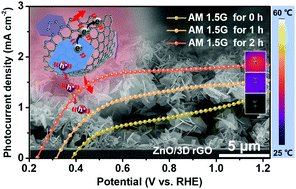
Chem. Commun., 2022,58, 8622-8625
https://doi.org/10.1039/D2CC02725A
Unveiling two antiaromatic s-indacenodicarbazole isomers with tunable paratropicity
Two formally antiaromatic s-indacenodicarbazole isomers were synthesized and characterized, to show that the curved isomer possesses a stronger s-indacene paratropicity than that of the linear isomer.

Chem. Commun., 2022,58, 8492-8495
https://doi.org/10.1039/D2CC02318K
Highly dispersed silica-supported iridium and iridium–aluminium catalysts for methane activation prepared via surface organometallic chemistry
The grafting of an iridium-aluminium precursor onto silica followed by thermal treatment under H2 yields small (<2 nm), narrowly distributed nanoparticles used as catalysts for methane H/D exchange.
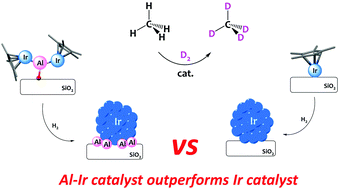
Chem. Commun., 2022,58, 8214-8217
https://doi.org/10.1039/D2CC02139K
Neutral isocyanide-templated assembly of pillar[5]arene [2] and [3]pseudorotaxanes
Unprecedented pillar[5]arene–isocyanide [2] and [3]pseudorotaxane complexes are reported. Importantly, electron deficient aryl isocyanides are also demonstrated to form inclusion complexes with the cavity of pillar[5]arene.
![Graphical abstract: Neutral isocyanide-templated assembly of pillar[5]arene [2] and [3]pseudorotaxanes](/en/Image/Get?imageInfo.ImageType=GA&imageInfo.ImageIdentifier.ManuscriptID=D2CC02255A&imageInfo.ImageIdentifier.Year=2022)
Chem. Commun., 2022,58, 7253-7256
https://doi.org/10.1039/D2CC02255A
Redox noninnocence of the formazanate ligand applied to catalytic formation of α-ketoamides
The redox noninnocence of the popular formazanate ligand backbone has been utilized for electron transfer and further synthesis of α-ketoamide from α-ketoacid and amine.
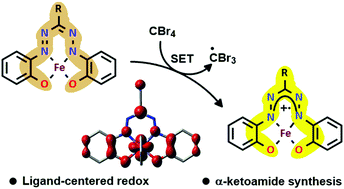
Chem. Commun., 2022,58, 6630-6633
https://doi.org/10.1039/D2CC02089K
Competitive profiling of ligandable cysteines in Staphylococcus aureus with an organogold compound
With the idea of exploiting metal templated C–S bond forming reactions to achieve modification of cysteines in bacterial proteins, a cyclometalated Au(III) compound was explored in a competitive chemoproteomic approach in S. aureus cell extracts.
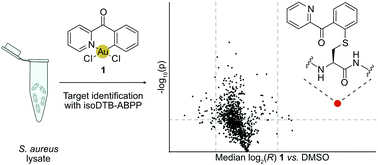
Chem. Commun., 2022,58, 5526-5529
https://doi.org/10.1039/D2CC01259F
A chiral binaphthyl-based coordination polymer as an enantioselective fluorescence sensor
A new coordination polymer has been designed as a chiral fluorescence sensor, which demonstrated enantioselectivity ratios up to 2.61 in the sensing of chiral analytes.
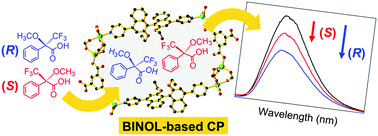
Chem. Commun., 2022,58, 4512-4515
https://doi.org/10.1039/D1CC06872E
A tandem process for the synthesis of β-aminoboronic acids from aziridines with haloamine intermediates
Based on a sequential process of haloamine formation and radical borylation, a novel strategy for synthesizing β-aminoboronic acids is devised.

Chem. Commun., 2022,58, 3767-3770
https://doi.org/10.1039/D2CC00808D
Atomic controllable anchoring of uranium into zirconate pyrochlore with ultrahigh loading capacity
Unavailable high loading of uranium with controllabe doping site on pyrochlore was achieved through molten salt synthesis.
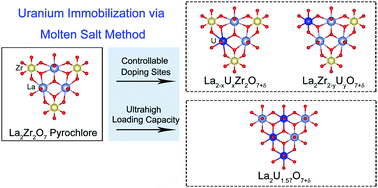
Chem. Commun., 2022,58, 3469-3472
https://doi.org/10.1039/D2CC00576J
Deep eutectic solvents comprising creatine and citric acid and their hydrated mixtures
We report the phase diagram for the binary creatine–citric acid mixture which features a stable and broad eutectic region.
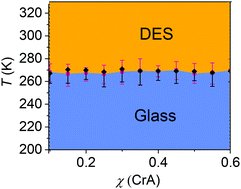
Chem. Commun., 2022,58, 2838-2841
https://doi.org/10.1039/D1CC06088K
Donor–acceptor based solvent-free organic liquid hybrids with exciplex emission and room temperature phosphorescence
Solvent-free organic liquids enable doping to deliver hybrid liquids with exciting luminescent features. Here exciplex emission and room temperature phosphorescence are achieved from two donor–acceptor combinations.
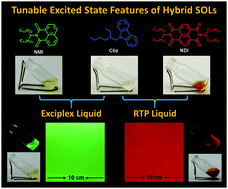
Chem. Commun., 2022,58, 1998-2001
https://doi.org/10.1039/D1CC07082G
Room temperature synthesis of polythioamides from multicomponent polymerization of sulfur, pyridine-activated alkyne, and amines
Through the design of a pyridine-activated diyne monomer, the catalyst-free multicomponent polymerizations of sulfur, aromatic alkyne, and a group of commercially available primary and secondary diamines were realized at room temperature or 40 °C.
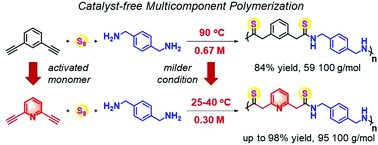
Chem. Commun., 2022,58, 1994-1997
https://doi.org/10.1039/D1CC06448G
Secondary-sphere modification in proline catalysis: old friend, new connection
Proline catalysis sparked not only the golden age of organocatalysis, but also the design of elaborate proline derivatives; instead, we propose to modify organocatalysts in situ under reaction conditions.
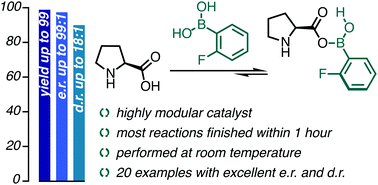
Chem. Commun., 2022,58, 1950-1953
https://doi.org/10.1039/D1CC05589E
Encapsulation of atomically dispersed Pt clusters in porous TiO2 for semi-hydrogenation of phenylacetylene
The multilayered catalyst 1.91%Pt@TiO2 with atomically dispersed Pt clusters shows excellent performance in the semi-hydrogenation of phenylacetylene.
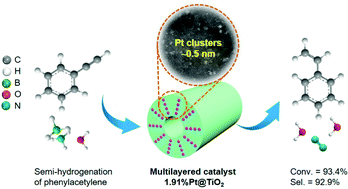
Chem. Commun., 2022,58, 1191-1194
https://doi.org/10.1039/D1CC06682J
Chirality inversion in hydrogen-bonded rhodanine–oligothiophene derivatives by solvent and temperature
Inversion of supramolecular chirality with a single enantiomer of a hydrogen-bonded pi-conjugated system is achieved by applying external stimuli such as solvent and temperature.
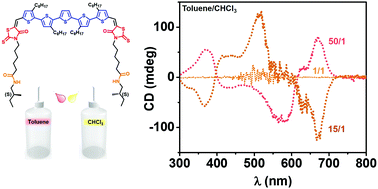
Chem. Commun., 2022,58, 529-532
https://doi.org/10.1039/D1CC05945A
About this collection
This annual special collection showcases research carried out by internationally recognised, up-and-coming scientists in the early stages of their independent careers, and who are making outstanding contributions to their respective fields. Join us in celebrating their contributions!
New articles will be added to this collection as they are published.